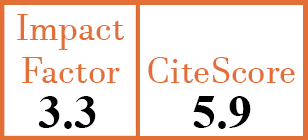Full Papers
Do extra-articular manifestations influence outcome in ankylosing spondylitis? 12-year results from OASIS
I. Essers1, S. Ramiro2, C. Stolwijk3, M. Blaauw4, R. Landewé5, D. Van Der Heijde6, F. Van Den Bosch7, M. Dougados8, A. Van Tubergen9
- Department of Medicine, Division of Rheumatology, Maastricht University Medical Center, and School for Public Health and Primary Care (CAPHRI), Maastricht University, Maastricht, the Netherlands. ivette.essers@maastrichtuniversity.nl
- Department of Rheumatology, Leiden University Medical Center, Leiden, the Netherlands.
- Department of Medicine, Division of Rheumatology, Maastricht University Medical Center, and School for Public Health and Primary Care (CAPHRI), Maastricht University, Maastricht, the Netherlands.
- Department of Medicine, Division of Rheumatology, Maastricht University Medical Center, and School for Public Health and Primary Care (CAPHRI), Maastricht University, Maastricht, the Netherlands.
- Department of Clinical Immunology and Rheumatology, Academic Medical Center, Amsterdam; and Department of Rheumatology, Atrium Medical Center, Heerlen, the Netherlands.
- Department of Rheumatology, Leiden University Medical Center, Leiden, the Netherlands.
- Department of Rheumatology, Ghent University Hospital and Ghent University, Ghent, Belgium.
- Department of Rheumatology, Paris-Descartes University, Hôpital Cochin, Assistance Publique, Hôpitaux de Paris, INSERM (U1153); Clinical Epidemiology Biostatistics, PRES Sorbonne, Paris-Cité, Paris, France.
- Department of Medicine, Division of Rheumatology, Maastricht University Medical Center, and School for Public Health and Primary Care (CAPHRI), Maastricht University, Maastricht, the Netherlands.
CER8787
2016 Vol.34, N°2
PI 0214, PF 0221
Full Papers
Free to view
(click on article PDF icon to read the article)
PMID: 26843505 [PubMed]
Received: 16/07/2015
Accepted : 29/09/2015
In Press: 02/02/2016
Published: 13/04/2016
Abstract
OBJECTIVES:
To assess in patients with ankylosing spondylitis (AS) whether extra-articular manifestations (EAMs) are associated with worse functioning, worse quality of life (QoL), and more radiographic damage over time.
METHODS:
12-year follow-up data from the Outcome in Ankylosing Spondylitis International Study were used, complemented with data on EAMs extracted from medical charts. Functioning was assessed by the BASFI and physical component of the SF-36, QoL by ASQoL and EuroQoL, and radiographic damage by the mSASSS. Generalised estimating equations analyses were made to assess whether EAMs were associated with these outcomes over time.
RESULTS:
216 patients were included (154 (71%) men, mean age 43.6 years (SD 12.7), mean symptom duration 20.5 years (SD 11.7), and mean follow-up 8.3 years (SD 4.3). In total, 58 (26.9%) patients had acute anterior uveitis (AAU), 24 (11.1%) inflammatory bowel disease (IBD), and 14 (6.5%) psoriasis. Univariably, IBD was associated with worse BASFI over time (B=1.26, 95%-CI 0.13 to 2.39, p=0.03), but not in a multivariable model. Furthermore, in a multivariable model, IBD was associated with EuroQoL over time (B=2.93, 95%-CI 0.14 to 5.72, p=0.04). Univariably, psoriasis was associated with radiographic damage (B=-7.25, 95%-CI -14.38 to -0.12, p=0.05) and ASQoL (B= -1.94, 95%-CI -3.32 to -0.57, p<0.01) over time, but not in a multivariable model. AAU was not associated with any outcome over time.
CONCLUSIONS:
In this longstanding AS cohort, the presence of EAMs was not associated with functional disability, QoL or radiographic damage over time, except for IBD, which was associated with a better EuroQoL.


